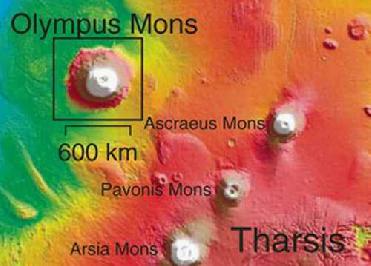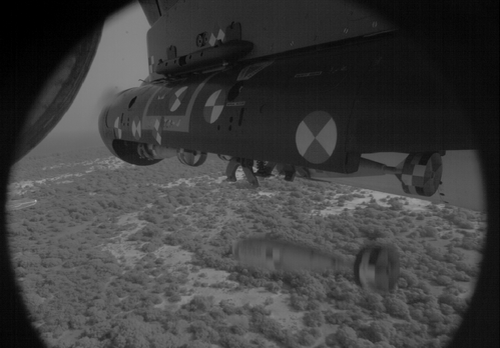
Rice study hints at water – and life – under Olympus Mons. Image from Rice University National Media
NEW YORK (BNS): Whether there is water on Mars and does the fiery planet support life has become a question for many researchers. Rice University professors Patrick McGovern and Julia Morgan by using a computer modeling system to figure out how Olympus Mons came into existence arrived at the conclusion that pockets of ancient water may still be trapped under the mountain.
The Martian volcano Olympus Mons is about three times the height of Mount Everest, but it's the small details that set the researchers thinking.
In a research published in the February issue of the journal Geology, the scientists explained that their finding is more implication than revelation. McGovern, an adjunct assistant professor of Earth science and staff scientist at the NASA-affiliated Lunar and Planetary Institute said that what we were analysing was the structure of Olympus Mons and why it's shaped the way it is. “What we found has implications for life – but implications are what go at the end of a paper,” said McGovern.
In modeling the formation of Olympus Mons with an algorithm known as particle dynamics simulation, McGovern and Morgan, an associate professor of Earth science, determined that only the presence of ancient clay sediments could account for the volcano’s asymmetric shape. The presence of sediment indicates water was or is involved.
The researchers said that Olympus Mons is tall, standing almost 15 miles high, and slopes gently from the foothills to the caldera, a distance of more than 150 miles. That shallow slope is a clue to what lies beneath, they said. They suspect that if they were able to stand on the northwest side of Olympus Mons and start digging, they'd eventually find clay sediment deposited there billions of years ago, before the mountain was even a molehill.
The European Space Agency’s Mars Express spacecraft has in recent years found abundant evidence of clay on Mars. This supports a previous theory that where Olympus Mons now stands, a layer of sediment once rested that may have been hundreds of meters thick.
Morgan and McGovern show in their computer models that volcanic material was able to spread to Olympus-sized proportions because of the clay's friction-reducing effect, a phenomenon also seen at volcanoes in Hawaii.
What may be trapped underneath is of great interest, said the researchers. Fluids embedded in an impermeable, pressurised layer of clay sediment would allow the kind of slipping motion that would account for Olympus Mons' spread-out northeast flank - and they may still be there, the researchers said.
Thanks to NASA's Phoenix lander, which scratched through the surface to find ice underneath the red dust last year, scientists now know there's water on Mars. So Morgan and McGovern feel it's reasonable to suspect water may be trapped in pores in the sediment underneath the mountain.
“This deep reservoir, warmed by geothermal gradients and magmatic heat and protected from adverse surface conditions, would be a favoured environment for the development and maintenance of thermophilic organisms,” the scientists said. This highlights the primal life forms found deep in the Earth's oceans, thriving near geothermal vents.
The researchers said that finding a source of heat would be a challenge. Recently methane gas was found on Mars, which is considered by some to be another marker for life. “Spacecraft up there have the capability to detect a thermal anomaly, like a magma flow or a volcano, and they haven’t. What we need is 'ground truth' – something reporting from the surface saying, 'Hey, there's a Marsquake,' or 'Hey, there's unusual emissions of gas.' Ultimately, we'd like to see a series of seismic stations so we can see what's moving around the planet,” McGovern said.
 Previous Article
Previous Article













The Indian Air Force, in its flight trials evaluation report submitted before the Defence Ministry l..
view articleAn insight into the Medium Multi-Role Combat Aircraft competition...
view articleSky enthusiasts can now spot the International Space Station (ISS) commanded by Indian-American astr..
view article